A Normal Israel?
Michael Brenner’s erudite and elegantly written new book reminds us that his subject, the “idea” of Israel, has always been a contentious one, even among those who have upheld it. Throughout its history, the Zionist movement has been a collaboration between Jews who wanted a state like others and those who aspired to create something altogether unique. Zionism has long based its claim to sovereignty on the universal right to national self-determination, and the phrase “like all other nations” has been incorporated into Israel’s Declaration of Independence, yet the goal of “normalization” has proven to be much more complicated than most early Zionists had thought.
As Brenner notes, the end of the 19th century witnessed the birth not only of Zionism but of a number of different attempts to “normalize” the status of Jews. In the annus mirabilis of 1897 Herzl convened the First Zionist Congress in Basel in August, the Jewish socialist Bund was founded in Vilna in October, and the leading industrialist Walther Rathenau published a haunting and somewhat neglected plea for radical assimilation, evocatively titled Hear, O Israel, in Berlin. Political Zionism argued that normalization could be achieved only if the Jews were to have a state of their own, like all other nations; the Bundists argued that Jews should strive for integration into the societies in which they were living through a universal socialist revolution that would nonetheless give them a distinct place in the new world order alongside other nations; and Rathenau suggested that Jews could attain integration into German society if they would redefine themselves as a German tribe, like Saxons, Bavarians, or Prussians.
Herzl’s vision of the future Jewish state, as presented in his utopian novel Altneuland, was straightforward: The Jewish commonwealth would be a Western European liberal democracy, with equal citizenship rights for its non-Jewish population and suffrage for all. He coupled this with a generous social—though not socialist—vision of a welfare state that guaranteed a seven-hour workday and other institutional arrangements that Herzl called “mutualism.”
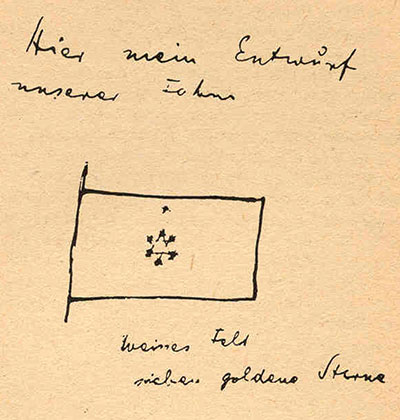
The Basel congress and the Vilna meeting could not have been more different from one another. Herzl’s political instincts and flair gave the First Zionist Congress, with its almost 200 participants, a considerable measure of public visibility and international press coverage. After all, it was aimed at winning the support of the public, Jewish and non-Jewish, for the idea of a Jewish state in Palestine. The Vilna event was a clandestine, underground meeting attended by less than a dozen people who aspired to speak for the millions of Jews in the tsarist empire and, eventually, America. Rathenau, on the other hand, spoke for himself and did not represent or found a movement, but his ideas reflected the feelings of many members of the well-established German Jewish bourgeoisie.
Despite its efforts to reach out to the Jewish masses and to win over world public opinion, the Zionist organization established in Basel remained a very modest enterprise until World War I. It continued to hold annual congresses even after the early death of Herzl in 1904. It helped to inspire Jewish immigration to Palestine and the founding of a number of villages and towns, including Tel Aviv, but it remained marginal in Jewish life and world politics. The Bund, on the other hand, despite its small start in a Vilna basement, became a mass movement, at one time numbering more members than the general Russian Social Democratic Labor Party, with which it was affiliated. For a time after World War I, it was the largest Jewish party in the Sejm of independent Poland. Rathenau’s call for radical assimilation did not ameliorate the position of German Jews. Rathenau himself, who helped more than anyone else to organize the German economic war effort and later became foreign minister in the Weimar Republic, was assassinated in 1922 by an ultranationalist, anti-Semitic German militia that accused him of treachery.
Yet it was only Zionism that ultimately succeeded in attaining its goal. Brenner does not explicitly try to explain this, but his description of both the Bund platform and Rathenau’s ideas may provide a key. What both the Bund and Rathenau proposed was not just a change in the status of the Jews but a radical transformation of the whole structure of the societies and polities in which they were living. By claiming Jewish cultural and linguistic rights within the tsarist empire, the Bund was calling for a total overhaul of Russia, transforming it from a unitary state into a loose confederation of nations and ethnicities. Very few ethnic Russians, including members of the two major socialist parties (Marxists and Narodniks), were willing to accept this. In other words, in order to solve the “Jewish problem,” the Bund actually called for the dismantling of Russia.
Something similar happened to the Bund in interwar Poland. After almost a century and a half of servitude to neighboring empires, ethnic Poles had little interest in making Poland into a multiethnic, multireligious, and multilingual society. And in Germany, few Germans would have accepted the idea that Jews are just another German tribe “like Saxons or Bavarians.” Both the Bund and Rathenau had set off on impossible missions: They ran against the foundational ideas of the countries in which they lived. Herzl, at least, understood this. If there were a chance for Jewish normalization, it would have to be anchored outside of Europe, though it might, if it succeeded, have a positive impact on the status of the Jews who would remain in Europe.
After discussing these three very different paths to “normalization,” Brenner devotes the rest of his book to the internal debates within the Zionist movement, and later Israel, with regard to the very same issue. He begins, naturally enough, with “the Odessa Jewish intellectual” Ahad Ha-Am’s challenge to Herzl’s political Zionism. Brenner agrees with Ahad Ha-Am’s contention that the difference between his approach and Herzl’s was rooted in the divergent experiences of Jews in Western and Eastern Europe: Western European Jews felt threatened as individuals; Eastern European Jews felt that their cultural identity was threatened.
Ahad Ha-Am is rightly remembered today for having warned that a Jewish state achieved through diplomacy—or force—might become so deeply entangled in preserving its existence that it would undermine the foundations of a Jewish cultural renaissance. As Brenner crisply puts it, “Herzl wanted a small Switzerland in the Middle East; Ahad Ha’am longed for a new Judea, in which Hebrew would be spoken.” Even if his radical critique of Herzl’s Altneuland as merely a kind of “collective assimilation” was unjust, Ahad Ha-Am did have a point. Certainly his moral sensitives made him prescient about the possibilities of the emergence in Palestine of an Arab national movement in response to Zionism and Jewish settlement. Yet Ahad Ha-Am’s insistence on the cultural dimensions of Zionism paradoxically led him to a highly ethnocentric approach to the meaning of a Jewish revival. Maintaining Jewish cultural identity in the diaspora is one thing, but when Ahad Ha-Am criticized Herzl for fashioning his Altneuland along the lines of the European Enlightenment, he opened the door for an exclusivist approach to both culture and politics.
To Ahad Ha-Am, everything in Altneuland that wasn’t “Jewish” (or Hebrew) was out of place in the future Jewish society in the Land of Israel. For all his philosophical secularism, Ahad Ha-Am remained a shtetl Jew, a man obviously uncomfortable with anything that looked goyish. Today, many Israeli right-wingers, religious as they are, are in a way closer to Ahad Ha-Am’s cultural ethnocentrism than they would care to admit.
Brenner gives ample space to the various socialist Zionist visions, some of them totally utopian and others more attuned to the complex realities of the Jewish national project. That the universalist ideology of socialist Zionists occasionally collided dramatically with their insistence on “Jewish labor” (avoda ivrit) as part of their construction of a Hebrew nation is just one of the tensions. David Ben-Gurion inevitably appears in this context as the pragmatic man for all seasons.
Vladimir Jabotinsky is a challenge to any dispassionate discussion of Zionism, and Brenner rises to the occasion. By any measure, Jabotinsky was the most nationalist of the major Zionist leaders, viewing the establishment of a Jewish state on both banks of the Jordan as the central aim of the movement. At the same time, he was, by education and inclination, the most European, cosmopolitan star in the Zionist firmament—advocating, under the inspiration of Atatürk, for the replacement of the Hebrew alphabet by a Latin one. As Brenner notes, Jabotinsky and the Betar youth movement he founded also “borrowed some elements from the nationalistic movements of Europe, including Fascist Italy,” and there is no doubt that in the 1920s and 1930s being “European” stood for adopting more integralist and authoritarian ideologies than liberal ones.
Yet, at the same time, Jabotinsky was adamant that once Zionism reached the goal of statehood, the Jewish state would guarantee equal rights—both individual and collective—to its Arab population, going so far as to suggest that if the head of the government were Jewish, his deputy should be an Arab, and vice versa. Jabotinsky’s ideal state would have been much more of a federal multiethnic polity than a nation-state, and this part of his vision was clearly inspired by the ideas of the Austro-Marxist socialists. More than anyone else, Jabotinsky exemplified the complexities of what it meant to adopt European ideas, since Europe itself was torn at the time by conflicting tendencies.

Following his review of the debate about partition in the 1930s and 1940s, Brenner focuses on the new state’s attempts to address its relationship to the diaspora and come to grips with the existence of a large Arab minority within its borders. The latter dilemma was of course exacerbated by the fact that this minority was culturally and linguistically part of an Arab world that remained at war with the very idea of a Jewish political entity in its midst.
The major contribution of Brenner’s book lies, however, elsewhere: in his argument that the Six-Day War was, next to the very establishment of Israel, the most defining moment in its history. “Six days in June 1967,” he writes, “changed the very essence of the Jewish state.” While most commentators in 1967 and since have focused on the way the war changed the regional balance of power and put an end to any Arab hope of destroying Israel, Brenner looks inside Israel and shows how 1967 changed Israel’s internal discourse, its politics, and eventually its foundational myths and aims. Simply put, the current hegemony of the nationalist-religious parties in Israeli politics is the direct outcome of those six incredible days in June.
The most important of these changes was that the territorial conquests reopened debates about partition that had been considered to have been concluded by the establishment of Israel in part of Palestine. During the years before 1967, Menahem Begin’s Herut party (the heir of Jabotinsky’s movement and the predecessor of the current Likud) never actively called for the liberation of the Old City of Jerusalem, the Western Wall, or Hebron because the regaining of sovereignty and the ingathering of the exiles were justly considered a sufficiently phenomenal success. The Six-Day War changed all this. All of a sudden, control over all of Eretz Yisrael became a reality. It is one thing not to initiate a war for the Old City of Jerusalem or the Tomb of the Patriarchs in Hebron, and it is a totally different matter to give them up when they are already under your control. The Palestinian refusal to recognize Israel played into the hands of the Israeli right wing, and over time the feasibility of evacuating hundreds of thousands of Israeli settlers from the West Bank has come to appear more and more remote.
The control of the historical holy sites in the Old City and all over Judea and Samaria also changed the profile of the major Zionist religious party, the National Religious Party, which had been a part of the Zionist movement almost from its inception. Religious Zionists were traditionally careful to distinguish the pragmatic attempts of creating in the here and now a refuge for the Jewish people from messianic yearnings. This cautious approach made the NRP a logical coalition partner for governments headed by Ben-Gurion’s Mapai Labor Party. In many respects, the NRP was Mapai with a kippa.
The astounding victory of 1967 transformed the NRP into the most nationalist group in Israeli society. A “new generation in the party turned it into the political mouthpiece of the settlers and the main political forum for a messianic interpretation of Zionism.” The traditional religious wariness about pushing the end time (dekhikat ha-ketz) now yielded to the messianic visions of Rav Kook, which turned the party into the natural partner of the Likud.
Palestinian terrorism against civilians only exacerbated the situation, as did the demographic changes within Israeli Jewish society. Millions of immigrants from Middle Eastern countries came to Israel with memories of persecution under Arab Muslim regimes, and this obviously did not make them more willing to make concessions to the Palestinians. The one million immigrants who came from the former Soviet Union were mainly secular (and in many cases not halakhically Jewish or not Jewish at all), but they brought with them the characteristic Russian belief in a strong state. These tectonic changes have made Israel today much more nationalistic and religious than it once was. Netanyahu’s dominance of Israeli politics is the consequence of these changes, not their cause.
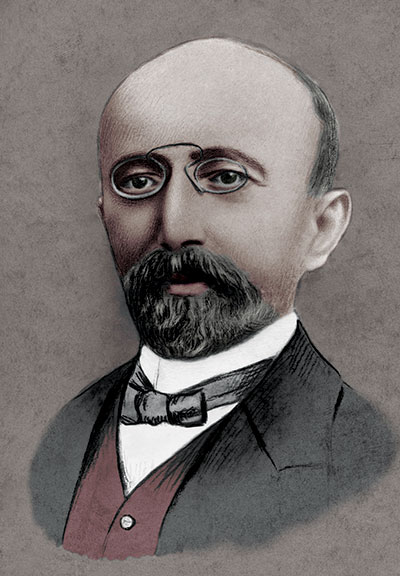
(© Lebrecht Authors/Bridgeman Images.)
As Isaiah Berlin is said to have quipped, Jews are like everyone else—only more so. This was forcefully brought out by Amnon Rubinstein and Alexander Yakobson in their seminal book Israel and the Family of Nations: The Jewish Nation-State and Human Rights (2009). They showed that Israel is by no means the only modern democratic nation-state whose national identity is linked to religious traditions and symbols and incorporated into legislation and political culture. Greek nationalism cannot be divorced from its Orthodox culture, nor can Polish nationalism be totally separated from its Catholic heritage; Jan Hus, a religious reformer, is viewed as the father of modern secular Czech nationalism. Even the radical secularist French Republic views Saint Louis as one of the founders of the French state and reveres Joan of Arc, a religious fanatic, as a martyr in the French patriotic struggle against England. And nobody objects that the flags of numerous democratic European countries (from the United Kingdom and Switzerland to all Scandinavian states) feature the Cross. Yet there is no doubt that the power and weight of religious elements, both as part of historical memory and as factors in contemporary legislation and behavior, are much stronger in the Jewish state than in most other countries.
As Brenner rightly points out, these religious elements in Israeli self-understanding have recently increased, and the fact that arguments from biblical sources and divine promises are used to counter Palestinian claims for statehood only underlines the impact of 1967 on Israeli society. This helps to transform the Israeli-Palestinian conflict from a clash of two national movements into a war of religion. Together with the recent rise of xenophobic nationalist movements and leaders—from Orban and Kaczynski to Trump—this further removes Israel from the liberal, universalist version of Zionism. That this has happened before, in the 1930s when some offshoots of Jabotinsky’s movement sought an alliance with extreme right-wing integralist and even fascist movements, is scant consolation and points to the dangers inherent in every national movement—perhaps “only more so” in the Zionist case, if one may take Berlin’s bon mot one step further.
And yet there is another, diametrically opposed, element in Israeli politics and society that is also “abnormal.” Israel is one of almost a hundred new nations that have gained independence since World War II. Most of them, on obtaining sovereignty, tried to adopt democratic constitutions and forms of government. Today, most of them are one-party states, military dictatorships, or communist, semifascist, or personalistic authoritarian dictatorships—or a combination of the above.
By the Political Science 101 textbook, Israel should have long ago ceased to be a democracy. No post-1945 new nation was subjected to such a combination of extraordinary pressures after its emergence as Israel: invasion by all its neighbors, constant siege, mass immigration (mostly from nondemocratic countries), and economic underdevelopment in its early days. Because it needed to do so, Israel developed a strong and highly popular army, whose leaders figure as symbols of national consensus and identity. Yet it did not descend into a military dictatorship or an authoritarian one-party state. It continues to be a raucous and contentious multiparty, open society. No party has ever achieved—as in Hungary or Poland—a majority in parliament, so every government has been a coalition.
Some of these governments have been weak and open to internal pressures that greatly attenuated the power of even very popular prime ministers including Ben-Gurion, Golda Meir, and now, Netanyahu. The reasons for the resilience of Israel’s democracy cannot be found in any religious texts or the experience of ancient Jewish commonwealths. Nor can the roots of Israeli democracy be found in the tradition of the countries from which the first immigrants came, most of which were not democratic.
Neither the Bible nor the Mishnah nor the Talmud advocated—nor could they advocate in their time—a democratic structure. David and Solomon were typical ancient oriental despots, and the Hasmonean kingdom quickly descended into a Hellenistic despotism. Yet there is a Jewish tradition that undergirds Israeli democracy: the tradition of self-governance in diaspora Jewish communities. In order to survive and guarantee Jewish life, Jews had to develop voluntaristic communities (kehilot). Whether in Cracow or Casablanca, in Berlin or Baghdad, if Jews wanted to have a synagogue, a school for their children, a cemetery, or a social fund for their destitute members, the only way to achieve their goals was to set up a community (kehila), elect officers, impose voluntary taxes on themselves, and appoint rabbis and teachers. The Jewish kehila was the equivalent of the New England township, which the Pilgrim Fathers brought with them from England.
And therein lies a paradox: The founding fathers and mothers of the Jewish Yishuv in Palestine in the late 19th and early 20th centuries were mostly secular and, in many cases, rebelling against the religious atmosphere of Eastern European shtetls. But when they came to Palestine and set up villages and towns—from Degania to Tel Aviv—they set up their local councils just as their grandfathers had set up their communities. After the British conquest of Palestine, in 1920, the less than 100,000 Jews living there set up the first Representative Assembly of Jews in Eretz Yisrael (Assefat ha-Nivharim). More than 25 parties contested the elections, and the assembly then elected the Va’ad Leumi (National Committee) that eventually became the de facto government of what came to be called ha-medina ba-derekh (“the state in the making”).
In 1948 the nascent state of Israel did not have to reinvent the democratic wheel. The institutions were there. The self-governing authorities of the Jewish community in Mandatory Palestine, headed by David Ben-Gurion, became the provisional government of the independent Jewish state, which then held within a few months—in the middle of the War of Independence!—elections for the first Knesset. This is not normal—no new post-1945 nation had such a deeply anchored institutional representative and democratic infrastructure.
Brenner rightly brings out the challenges facing contemporary Israel, and not all that he has to say is encouraging. Yet despite everything, Israel is an Athens, flourishing, though embattled, not the Sparta it is sometimes alleged to be. Neither is it, nor will it become, God forbid, an Iran. Yet the challenges so aptly described by Brenner remain, and as it often happens in history, many of them stem, dialectically, from its own success story.
Comments
You must log in to comment Log In
Suggested Reading
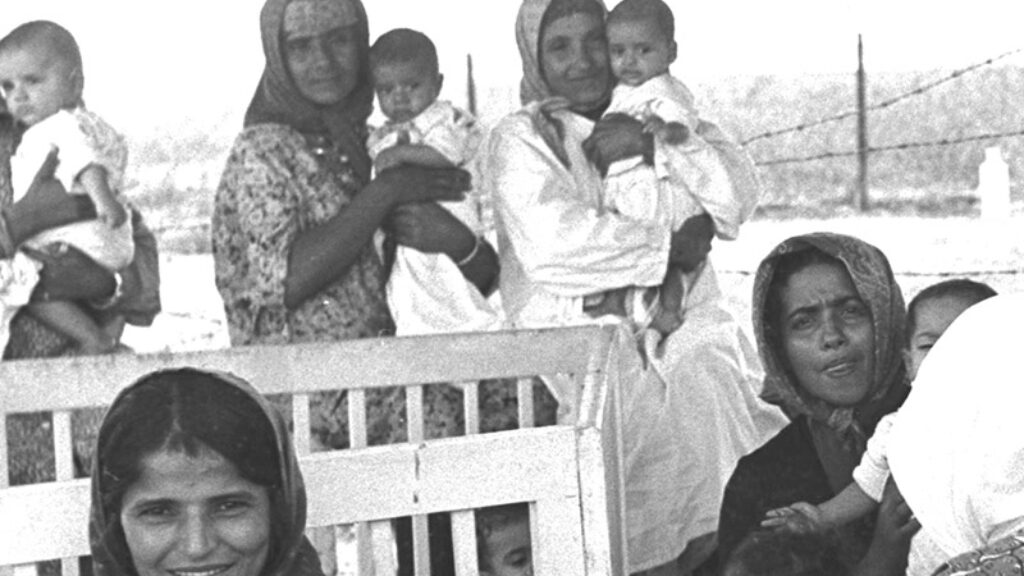
Kidnapping History
Did the Ashkenazi elite of the early State of Israel conspire to systematically kidnap Yemenite Jewish children?

Chaim Grade: Portrait of the Artist as a Bareheaded Rosh Yeshiva
Grade attempted to perform the impossible: to undo in literature what had occurred in history and revive the dead of Jewish Vilna.
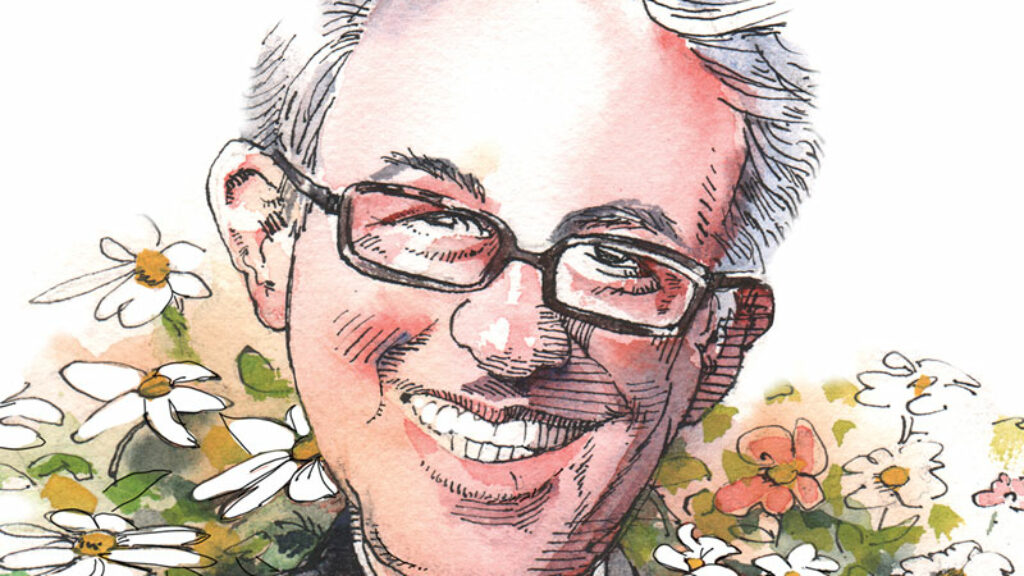
“He Called Me Jim”
In his autobiography, James Atlas explores how and why he spent his professional life living with and overshadowed by complex, overweening literary giants.
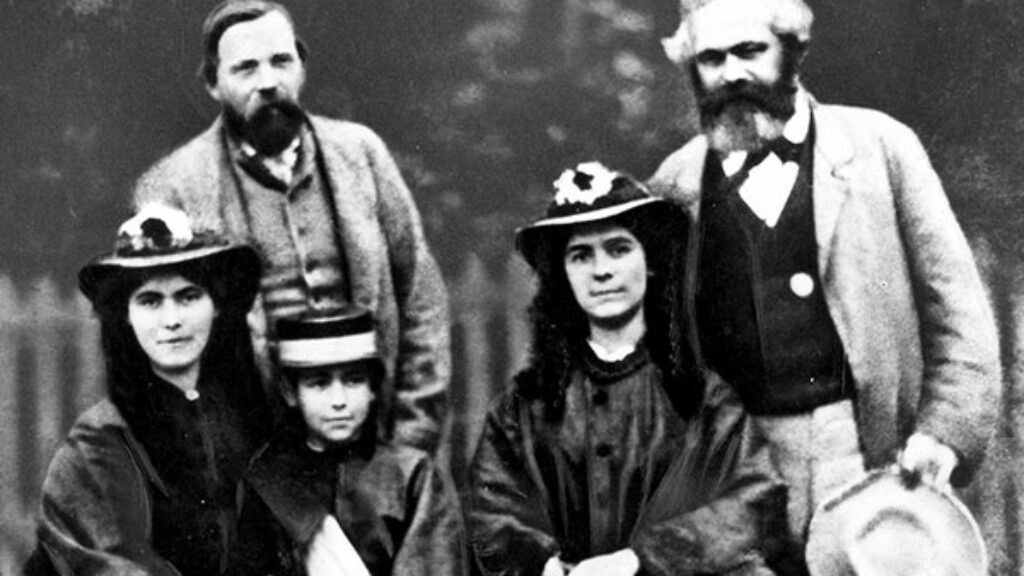
Marx and the Jewish Fingerprint Question
Are there hints about Marx’s thoughts on Judaism in his writing, and if so, what do they say?
gershonhepner
THE DOUBLE CITY CALLED JERUSALEM
The leg on which the state of Israel pivots since its independence is not Sparta,
the state is democratic, more more like Athens ever since its Independence charter,
while firmly standing Solomonically on its more ancient, but in no way looser, limb,
a capital whose name is doubled, undivided in its golden years, Jerusalem.
[email protected]